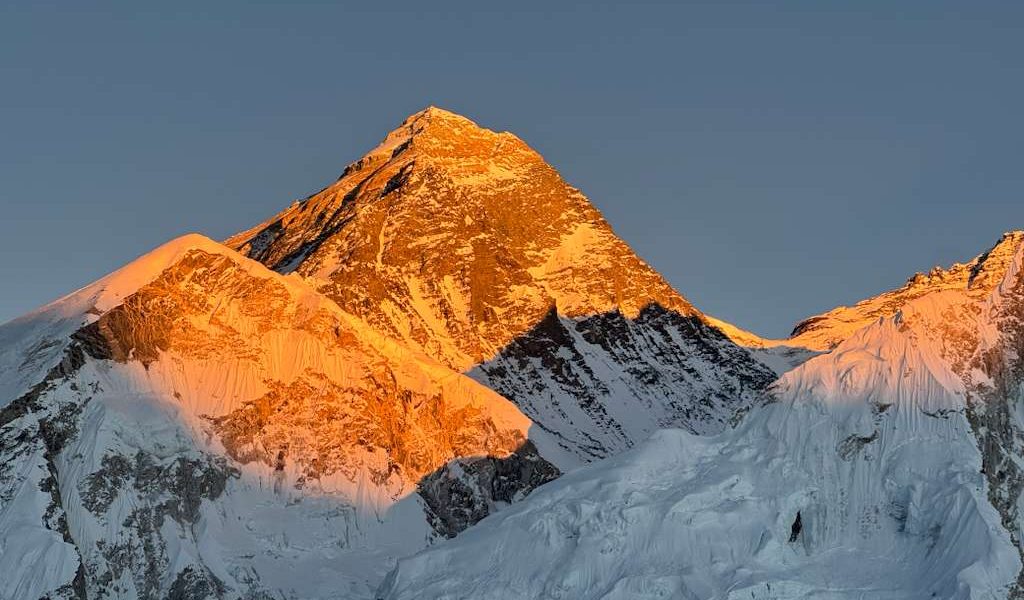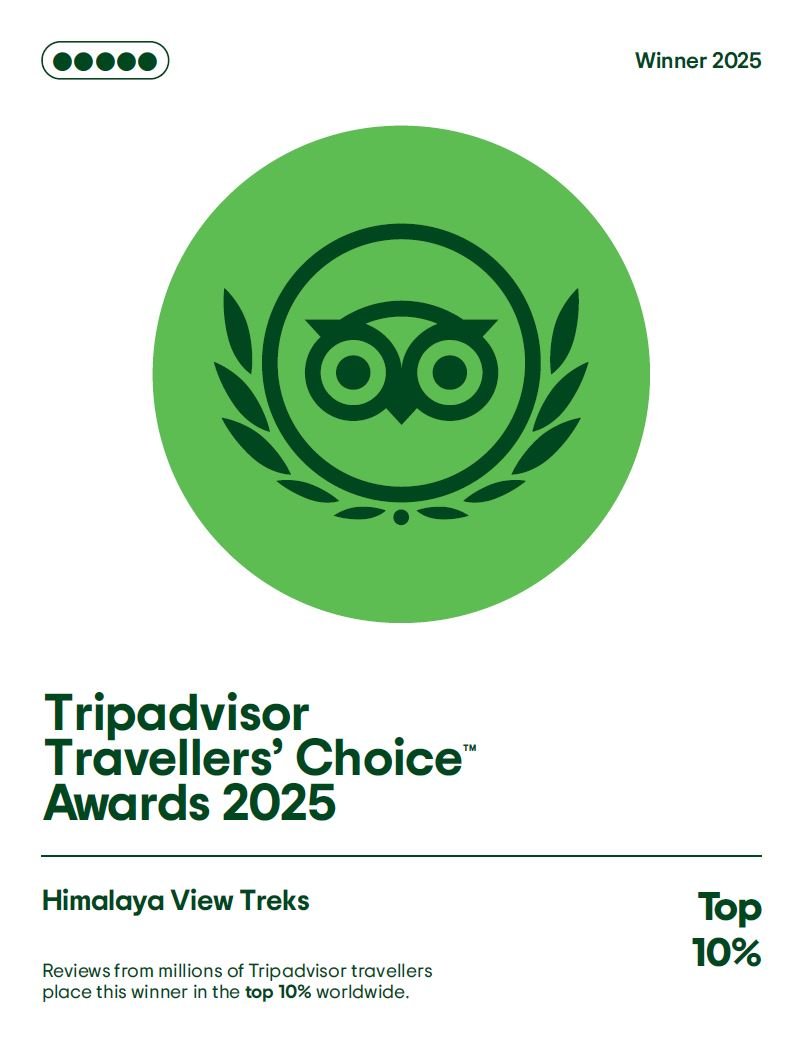Everest Base Camp Trek 2026/2027: The Ultimate Guide to Planning Your Journey to the Foot of the World’s Highest Peak
Himalaya View treks special offer Everest base camp trek 2026/2027, The Everest Base Camp Trek (EBC) stands as one of the world’s greatest trekking adventures—an inspiring, challenging, and deeply rewarding journey through the heart of the Himalayas. As more trekkers begin preparing for the 2026 and 2027 trekking seasons, interest in this legendary route continues to rise. Whether you are a first-time Himalayan traveler or a seasoned high-altitude adventurer, trekking to the base of Mount Everest (8,848.86 m) promises a life-changing experience filled with dramatic landscapes, ancient Sherpa culture, and some of the most breathtaking views on Earth.
This comprehensive guide covers everything you need to know about the Everest Base Camp Trek for 2026/2027, including routes, difficulty levels, costs, permits, best seasons, weather conditions, gear packing lists, altitude information, preparation tips, accommodations, food, safety, and more. Use it as your complete resource to confidently plan and prepare for your Himalayan adventure.
Why Trek to Everest Base Camp in 2026/2027?
With each passing year, trekking infrastructure improves, weather forecasting becomes more accurate, and services on the trail become more reliable. The seasons of 2026 and 2027 are expected to be especially favorable due to:
Improved Trails and Visitor Management
Nepal’s trekking authorities and local communities continue to upgrade trails, suspension bridges, and safety features. The Khumbu region is already known for being one of the well-maintained trekking destinations in the world, and upcoming enhancements promise smoother trekking logistics.
Better Accommodation Standards
Teahouses along the EBC route have upgraded rooms, added more heating options, improved dining halls, and implemented renewable energy solutions. By 2026/2027, trekkers can expect even more comfort at high-altitude lodges.
Increased Safety Protocols
Post-pandemic, Nepal implemented stricter trekking guidelines, including mandatory trekking guides in many regions. These measures will continue, ensuring added safety, improved rescue response, and smoother communication in remote areas.
Growing Popularity and Future Demand
Everest Base Camp remains a bucket-list adventure. If you are planning a trek in 2026 or 2027, now is the perfect time to secure early booking discounts, guarantee Lukla flights, and reserve experienced guides.
Overview of the Everest Base Camp Trek 2026
The classic Everest Base Camp trek takes you deep into the Khumbu Valley, following the footsteps of legendary mountaineers like Tenzing Norgay and Sir Edmund Hillary. Standing at 5,364 meters, Everest Base Camp is the closest you can get to the world’s highest mountain without engaging in technical climbing.
Trek Distance and Duration
- Distance: Approx. 130 km (round trip)
- Standard Duration: 12–14 days
- Maximum Altitude: Kalapatthar (5,545 m)
- Difficulty: Moderate to challenging
Starting and Ending Point
- Fly-in: Kathmandu → Lukla (2,860 m)
- Trailhead: Lukla
- End: Lukla
Major Highlights
- A thrilling flight into one of the world’s most iconic short runways: Tenzing–Hillary Lukla airport
- Crossing the Hillary Suspension Bridge
- Exploring the Sherpa capital of Namche Bazaar
- Visiting ancient monasteries like Tengboche Gompa
- Unmatched views of Ama Dablam, Lhotse, Everest, Nuptse, Thamserku, and more
- Reaching Everest Base Camp (5,364 m)
- Sunrise from Kalapatthar, the best Everest viewpoint
- Immersing in Sherpa culture, hospitality, and Himalayan traditions
Detailed EBC Route Breakdown (Day-by-Day)
Below is the classic 14-day Everest Base Camp itinerary, ideal for acclimatization and success.
Day 1: Arrival in Kathmandu (1,400 m)
You arrive in Nepal’s bustling capital city, Kathmandu—home to rich culture, ancient temples, and lively markets. Trek briefing and gear check are done on this day.
Day 2: Fly to Lukla & Trek to Phakding (2,610 m) – 3 to 4 hours
A 25–30-minute scenic mountain flight takes you to Lukla. The trek begins gently as you descend to Phakding along the Dudh Koshi River.
Day 3: Trek to Namche Bazaar (3,440 m) – 6 hours
Cross multiple suspension bridges, including the famous Hillary Bridge. The final climb to Namche is steep, but the reward is worth it—Namche Bazaar is a vibrant Sherpa town with cafes, bakeries, and shops.
Day 4: Acclimatization Day in Namche
Short hikes to Everest View Hotel or Khumjung Village help your body adjust to the altitude.
Day 5: Trek to Tengboche (3,860 m) – 5 hours
The route winds through rhododendron forests with stunning views of Ama Dablam. Visit Tengboche Monastery—spiritual heart of the Khumbu.
Day 6: Trek to Dingboche (4,410 m) – 5 to 6 hours
Descend to Deboche, cross the Imja River, and walk through Pangboche—home to ancient monasteries and Sherpa culture.
Day 7: Acclimatization Day in Dingboche
A hike to Nangkartshang Peak (5,083 m) offers superb views of Island Peak and Ama Dablam.
Day 8: Trek to Lobuche (4,940 m) – 4 to 5 hours
Trek through the Khumbu Valley and visit the memorial area at Thukla Pass dedicated to climbers who lost their lives on Everest.
Day 9: Trek to EBC (5,364 m) & Overnight in Gorakshep (5,140 m) – 7 to 8 hours
This is the big day! After reaching Gorakshep, drop your bags and continue to Everest Base Camp. Stand at the foot of the world’s tallest mountain and soak in the achievement.
Day 10: Hike to Kalapatthar (5,545 m) & Trek to Pheriche (4,240 m)
Early morning hike to the best viewpoint for sunrise over Everest. Descend to Pheriche for the night.
Day 11: Pheriche to Namche Walking Distance 14.2 km (5-6 hours) 3440m/11285ft
Day 12: Namche to Lukla Walking Distance 13.5 km (5-6 hours) 2,800 m 9,100 ft
Day 13: We will fly back from Lukla to Kathmandu (1300 m). 30 minutes.
Day 13: Fly back to your home country. Himalaya View treks will arrange Airport transport.
How Difficult is the Everest Base Camp Trek?
EBC is a non-technical trek, meaning no climbing equipment is needed. However, the altitude and long hiking days make it moderately challenging.
Main challenges
- High altitude (max 5,545 m)
- Cold temperatures
- Long walking days (5–8 hours)
- Basic accommodation at higher altitudes
- Risk of altitude sickness
Who can join the trek?
Anyone with:
- Good physical fitness
- Determination and strong mindset
- Ability to walk long distances
You do not need previous trekking experience, although it helps.
Best Time for Everest Base Camp Trek 2026/2027
The best seasons remain:
Spring (March–May)
- Stable weather
- Perfect visibility
- Blooming rhododendrons
- Popular among climbers heading to Everest
Autumn (September–November)
- Peak season with clear skies
- Crisp mountain views
- Comfortable temperatures
Winter (December–February)
- Cold but peaceful
- Less crowded
- Great for photographers
Monsoon (June–August)
- Not recommended due to rain, landslides, and poor visibility
For 2026 and 2027, spring and autumn are expected to be busier than usual, so advance booking is highly recommended.
Weather Conditions for 2026/2027 EBC Trek
Spring Weather
- Day: 5°C to 15°C
- Night: -5°C to -10°C
Autumn Weather
- Day: 0°C to 12°C
- Night: -10°C to -15°C
Winter Weather
- Day: -5°C to 5°C
- Night: -15°C to -25°C
Lukla flights are smoother during stable weather windows in spring and autumn
Permits Required for Everest Base Camp Trek
- Sagarmatha National Park Permit NPR 3,000 for foreigners.
- Khumbu Pasang Lhamu Rural Municipality Permit NPR3000 per person.
No TIMS card is required for the Khumbu region.
Cost of Everest Base Camp Trek 2026/2027
The cost can vary depending on the service level.
8.1 Standard Package Cost
- USD 1,200 to 1,800 per person
Luxury Trek Cost
- USD 2,500 to 4,000 per person
What’s Included
- Guide and porter
- Domestic flights
- Accommodation and meals
- Permits
- Ground transfers
Additional Expenses
- Tips (guide, porter)
- Hot showers (USD 3–7)
- Wi-Fi (USD 2–10)
- Charging devices
- Personal gear
- Travel insurance
Accommodation on the Trail
Teahouses provide:
- Twin-sharing rooms
- Duvets
- Dining halls (heated)
- Basic toilets
- Hot showers (extra cost)
Rooms become more basic as altitude rises.
Food and Drinking Water
Expect nutritious meals such as:
- Dal bhat
- Noodles
- Fried rice
- Soups
- Pancakes
- Pasta
- Eggs
- Sherpa stew (thukpa)
Drinking water options:
- Bottled water
- Boiled water
- Water purification tablets
Packing List for 2026/2027
Clothing
- Down jacket
- Base layers
- Fleece jacket
- Trekking pants
- Windproof shell
- Gloves
- Thermal socks
- Buff/neck warmer
Gear
- Trekking poles
- Sleeping bag (-15°C)
- Good quality trekking boots
- Backpack 40–60L
- Headlamp
- Power bank
Personal Items
- Sunscreen
- Lip balm
- Water bottles
- First aid kit
- Moisturizer
Physical Preparation for EBC
Start training 8–12 weeks before the trek.
Focus on:
- Cardiovascular fitness
- Stair climbing
- Walking with a backpack
- Leg and core strength
Altitude Sickness Prevention
Follow these guidelines:
- Acclimatize properly
- Walk slowly
- Stay hydrated
- Avoid alcohol
- Descend immediately if symptoms worsen
Diamox can be used if recommended by your doctor.
Safety and Emergency Options
Emergency rescue by helicopter is available from anywhere on the Everest trail. Travel insurance with high-altitude trekking coverage is mandatory.
Everest Base Camp Trek for 2026/2027: FAQs
Q1: How early should I book my trip?
A: At least 4–6 months in advance, especially for spring and autumn seasons.
Q2: Do I need a guide?
A: Strongly recommended for safety, navigation, and support. Mandatory in many areas.
Q3: Can beginners do the trek?
A: Yes, with proper preparation.
Q4: What is the success rate?
A: Over 90% with proper acclimatization.
Q5: How cold does it get?
A: Temperatures can drop below -15°C at night.
Why 2026/2027 Is a Great Time to Trek to Everest Base Camp
- Improved infrastructure & accommodations
- Better access to weather forecasts
- More experienced guides and porter support
- Stable tourism growth
- Ideal scheduling for adventure seekers
If you have been dreaming about Everest Base Camp, 2026–2027 is the perfect time to turn that dream into reality.
Conclusion
The Everest Base Camp Trek 2026/2027 is more than just a trail—it is a journey into the soul of the Himalayas. From vibrant Sherpa villages to icy glaciers and towering peaks, the trek offers a rare blend of natural beauty, adventure, and cultural immersion. Whether you are preparing months in advance or simply exploring your options, this guide equips you with everything you need to plan a safe, successful, and unforgettable journey.
Standing at the foot of Mount Everest is not just about the destination—it’s about the transformation you experience along the way. With proper preparation, the right team, and a desire for adventure, Everest Base Camp in 2026/2027 could be the journey of your lifetime.





